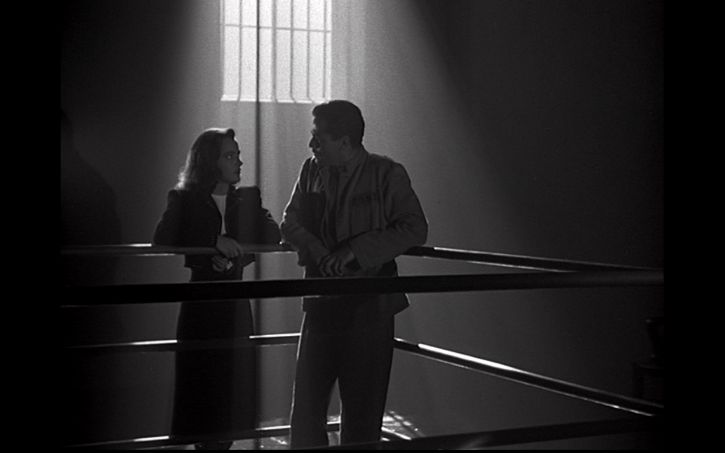
This is my reaction paper from a college film noir class. Originally written in 2003.
Spoiler...
"Phantom Lady" (1944) was directed by my favorite noir director, Robert Siodmak. It further enforces the film noir theme of the country woman saving the urban man from the city which has corrupted or wronged him.
The movie opens with some light music and smoky credits. Scott Henderson, morose, and cynical, but still likeable, walks into a bar and asks for a “pack of cigarettes, any brand.” This is our first clue that he is deeply troubled. Come on, everyone has a favorite brand. Scott immediately starts hitting on the even more morose looking woman sitting next to him. The two of them go out to the theater even though she doesn’t seem too happy about anything. Plus, she doesn’t want to smoke. What’s she doing in a film noir movie?
Scott returns home to an apartment full of silent police officers. He runs around screaming his wife’s name and finally decides to look for her in the bedroom. It is an interesting shot because the camera jumps into the bedroom so we can see Scott’s face when he opens the door. Thankfully there is no gratuitous shot of a dead body; the audience gets the idea. The cops treat Scott pretty badly because they’re sure he did it. Scott doesn’t help things by not showing the slightest bit of emotion.
The cops drag Scott to the places where the audience just saw him, but the bartender, the cabbie, and the actress all lie and say they don’t remember seeing a woman with Scott. There’s a random scene with two cops fighting over which ice cream flavor is superior and then the action jumps straight to Scott’s trial. This sequence is noteworthy because the people conducting the trial are heard but not seen. The camera never leaves the gallery except to see the stenographer's note which is indistinguishable because it is in short hand. When Scott’s sentence is read, Carol, Scott’s personal secretary and the audience miss the verdict because of an old woman chewing on a crisp apple.
From this point on Carol is the protagonist of the movie. She tortures the bartender by just staring at him and willing him to repent like some unholy angel of truth. When he gets run over she turns her attention to Cliff the drummer. For this sequence Carol dresses quite provocatively and the jam session in a jazz club is the most cathartic and overtly sexual sequence I’ve seen in a 40’s film.
Jack Marrow, the villain in this film was excellently portrayed by Francot Tone. He managed to be utterly creepy and somehow vaguely sympathetic due to the fact that he was obviously quite mad. We know from the busts in his apartment that Jack was at one time a brilliant artist, but when Scott’s wife, who he was having an affair with, insulted him, it made something within him snap; his tremendous ego was never the same again. And yet at the same time, Jack thinks that he is somehow superior to all other humans. He says, "I’m fond of Scott, we’re friends, but what’s his life compared to mine, compared to anybody’s." When Carol tells Jack to cross his fingers, he looks at his hands and sees that they no longer seem the same to him because of the murders he has committed. Jack is aware that he has been changed, he feels this change has made him stronger, but in reality it has made him weaker because he has lost his basic humanity.
This film is unfortunately currently hard to find in the US where it is only available on VHS. A DVD is available on Region 2, so if you live Europe, Japan, or the Middle East it's not a problem. Or, if you own a region free DVD player.
No comments:
Post a Comment